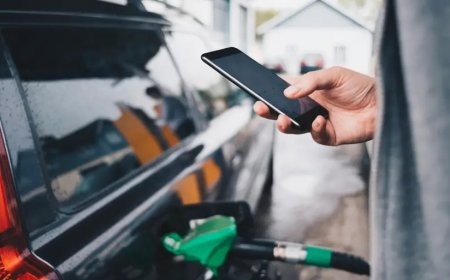Gig driving was a glimmer of hope for many people with disabilities — but for some, it's a dead end.
Nearly a dozen drivers told Business Insider that driving for companies including Uber and Lyft are their only options and don't fully pay the bills.
iStock; Rebecca Zisser/BI
- Americans with disabilities are overrepresented in gig work, where they have more flexibility.
- Many drivers said driving for companies, including Uber and Lyft, is their only option.
- Some told BI that they can't find other accommodating jobs and that gig work is a dead end.
Robert has to tell all of his Uber riders that he can't help them with their luggage.
The 56-year-old driver in Portland, Oregon, recently injured his arm helping a passenger with a heavy bag. Robert was born with an arteriovenous malformation, a tangle of blood vessels in his brain. The former construction worker had a stroke a decade ago, after which he had multiple brain surgeries, resulting in paralysis on the left side of his body.
He said gig driving was one of his only options to supplement his disability benefits. He started driving for Lyft and Uber in 2017 — a temporary way to pull in enough to live comfortably, he thought at the time. He figured out how to make driving work for him, though what used to be a three-day-a-week job has become a nearly everyday gig.
"I get to thinking there's got to be something I can do besides this, but there's really not," Robert said. "I don't have any options, and almost all jobs require you to stand."
He tries to make at least $100 daily and is often up at 5:30 a.m. to get more profitable rides. Since he can only work a set number of hours while keeping his disability benefits, he said he's struggled to pay his bills because, on some slow days, he only makes $15 an hour before taxes.
He said he has no choice but to keep driving and maximizing tips. He said he's received poor ratings from passengers who misunderstood — and sometimes disregarded — his disabilities. Even though he temporarily quit driving to try other jobs, nothing else has stuck.
Robert is one of many disabled gig drivers who say they have no other options to make a living.
"Disabled gig workers can be forced to rely on gig work for income because of issues with exclusion and discrimination in traditional workplaces," Shruti Sannon, a technology-policy program director at the ACLU who authored a paper on disabled gig workers, said. Sannon said that while disabled workers "can earn much-needed income via these platforms, they also have to navigate a range of complicated challenges."
In statements to Business Insider, Uber and Lyft outlined their commitments to supporting disabled drivers through accessibility and antidiscrimination policies and resources for various physical and mental disabilities.
"Lyft is committed to maintaining an inclusive and welcoming community and strongly condemns discrimination of any kind," a Lyft spokesperson said in a statement. "Drivers should contact our support teams concerning potentially discriminatory reviews or trends."
"Uber provides a platform for people with disabilities to achieve earning opportunities," an Uber spokesperson said in a statement. "Anyone who is legally able to drive can apply to drive with Uber. Vehicle modifications such as hand controls and pedal extensions are adaptive options that drivers use. Uber policy does not require drivers to help passengers with their luggage. Except in rare cases, such as Uber Assist rides, drivers are not expected to help passengers in and out of vehicles."
BI spoke with 12 disabled ride-hailing drivers about their experiences with driving as their main source of income. All said driving has become harder over the past few months, and most said they're lost on what to do next because driving is among their only job options. Though their last names are known to BI, most asked to use just their first names for fear of professional repercussions.
More and more disabled people are turning to driving for flexible work, and it's a mixed bag
Many disabled drivers have had positive experiences driving for ride-hailing companies, noting that driving has helped them supplement their income, overcome loneliness, and stay busy.
Drivers such as Omar Ford, a 47-year-old Uber Eats and DoorDash driver in South Florida who receives disability benefits, told BI that driving helps supplement his pension and benefits and allows him to overcome social anxiety and talk to others.
Jason McConahy, a 48-year-old part-time Lyft driver in Las Vegas, suffered a serious back injury over two decades ago and has collected disability benefits and cared for his kid for years. He started driving in 2016 and said that while his income is sometimes inconsistent, he earned over $3,000 across 265 trips in 2022.
He said the biggest benefit to driving with a disability is the opportunity to socialize with riders. Though he doesn't see gig driving as feasible for him full-time, it's given him peace of mind.
"Regardless of the type of passengers, it's human interaction," he previously told BI, adding that "driving for Lyft provides me with much-needed and appreciated social interactions outside my home."
But many other drivers told BI that their experiences have not been so positive.
Sannon said many disabled Americans look to gig work to set their schedules around unpredictable medical appointments and symptoms. But she said disabled Americans face considerable hiring discrimination, meaning they often settle for "low-paid and challenging" gig jobs.
"Most gig platforms, and the tasks they offer, aren't designed with disability in mind. As a result, workers can encounter accessibility issues while working," Sannon said. "Sometimes they can be entirely cut off from tasks that pay well, or they may expend a lot of time and effort on a task only to find out at the end that they can't complete it because of an accessibility issue."
Sannon found that passengers often rated drivers with mobility impairments poorly when they didn't help passengers with luggage. Ride-hailing platforms sometimes remove drivers with low ratings from the platforms, and some drivers told Sannon they didn't receive much long-term assistance from these platforms.
Uber and Lyft told BI they protect drivers and riders from discrimination based on physical or mental disability. An Uber spokesperson said drivers nationwide earned on average $35 per utilized hour — the period between a driver accepting a ride and completing a trip — with bonuses and tips in the third quarter of 2023.
On the Uber and Lyft apps, drivers can use accessibility features such as text instead of calls or screen flashes instead of auditory cues. They can also alert passengers if they are deaf or hard of hearing. Uber and Lyft welcome service animals to ride with drivers and have policies and protections for drivers who use wheelchairs. Both Uber and Lyft said they actively respond to allegations that a passenger gave a driver a low rating for any discriminatory reason.
Douglas Kruse, a professor at the Rutgers University School of Management and Labor Relations, and Lisa Schur, a professor of labor studies and employment relations at Rutgers, told BI that disabled workers were more likely to say they're doing this type of contingent work since they couldn't secure traditional full-time roles. The Americans with Disabilities Act does not protect gig workers, meaning they're not always provided with reasonable accommodations.
"A sizable number of people in non-standard work arrangements said this is the only type of job they could get," Schur said.
In a study analyzing 2017 Bureau of Labor Statistics data of 47,851 people, Kruse and Schur found that 21.5% of responding employed people with disabilities were in contingent work as of 2017, compared to 14.3% of people without disabilities. Contingent workers with disabilities also face a pay gap and are less likely to have health insurance, a pension plan, or union coverage.
Still, they found employment of disabled people has been increasing over the last few years, particularly in teleworking jobs. Both said increased employment protections for contingent workers could be a key to making gig work more equitable.
"Oftentimes, employers are reluctant to make accommodations in general but especially for people who may not be around for a while, and we find some evidence that contingent workers with disabilities were more likely to have unmet accommodation means," Kruse said.
Figuring out how to make ends meet
Shane, 37, is about to lose his house.
The Marine Corps veteran, who has driven for Lyft and Uber for the last few years, has various medical issues that limit how much he can drive.
Shane, who lives in North Carolina, said driving to more urban areas is the best he can do, given he recently lost his full-time job due to his medical issues and hasn't had any leads on a new one.
With few tips and earnings that don't meet what he and his family need, he said he isn't sure what his next steps will be.
"Frankly, we aren't getting by," Shane told BI. "I've been trying to make money with rideshare driving but with no luck, even with researching ideas and trying different avenues."
For many disabled gig drivers with medical issues, gig work is a temporary but necessary step toward getting back on their feet.
Rene, 48, an Air Force veteran with a debilitating back injury, has driven for Lyft and Uber in the Denver area for a few months after holding full-time jobs in real estate. She couldn't work a 9-to-5 due to her medical issues and resorts to gig driving to earn money.
Even as driving becomes more painful, she said she can't secure gig work or full-time positions that pay better and fit her needs. She said she can only drive between two and four hours at a time and needs to take recovery days after longer shifts.
Her low earnings have forced her to give up her apartment and move in with her family while she searches for more stability.
"There's no life, no self-care, exercise. There's no time for relationships because your whole day is spent managing the pain and then trying to squeeze in hours to pay the bills," Rene told BI.
People with medical issues that put them out of work are also often prevented from reentering the traditional workforce. Richard H. drove for Uber and Lyft in the Phoenix area for eight years before being diagnosed with leukemia in the summer of 2021. He noticed it was harder to make the amount needed to live comfortably after he started driving again in early 2023 — after 1 ½ years of chemotherapy and recovery.
Richard said he's now searching for a full-time job because he's still not comfortable with the amount he makes driving six to seven days a week from 6 p.m. to 2 a.m.
"They don't pay us enough for us to be able to make a decent living now," Richard told BI. "Back then, I'd go out for three to four hours and make $400 when I first started. Now, you have to go out and work 10 to 14 hours to try to make $300."
Working toward stability
Many disabled gig drivers are searching for ways to achieve more stability, whether that means going back to school, building up experience in other fields, or looking for ways to help others.
Michael, in his late 30s, made over $110,000 in gross earnings driving for Uber and Lyft in New Jersey in 2022. This was reduced to just $14,000 after taking out commissions to the ride-hailing companies, taxes, and other expenses. This amount wasn't sufficient to cover expenses, including rent, childcare, utilities — and treatments for his spinal injury. He said he mostly depends on tips and strategizes where to drive to make the most money.
Michael said he's almost done with an associate's degree at a community college, which he's earning while driving nearly full-time. His plan is to attend a two-year bachelor's program sponsored by Uber at Arizona State University, where he'll study supply-chain management.
"As soon as I complete my bachelor's, I'm looking for a job because health insurance is really important for me," Michael said. "My wife works just so that we can get health insurance because my medication is $6,000 a month."
Senior economy reporter Jacob Zinkula contributed reporting.
Are you a gig worker who is struggling to make ends meet? Are you a gig worker with a disability looking for other types of work? Reach out to this reporter at [email protected].
What's Your Reaction?




























:quality(85):upscale()/2024/01/25/878/n/1922153/f94f61ec65b2bf18018990.47538761_.jpg)

:quality(85):upscale()/2024/01/26/751/n/1922153/6bd241b765b3e57a0c5559.91495665_.png)
:quality(85):upscale()/2024/01/26/759/n/29590734/b7f6660b65b3e8460d7196.77057039_.jpg)











